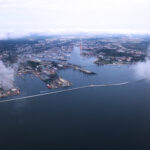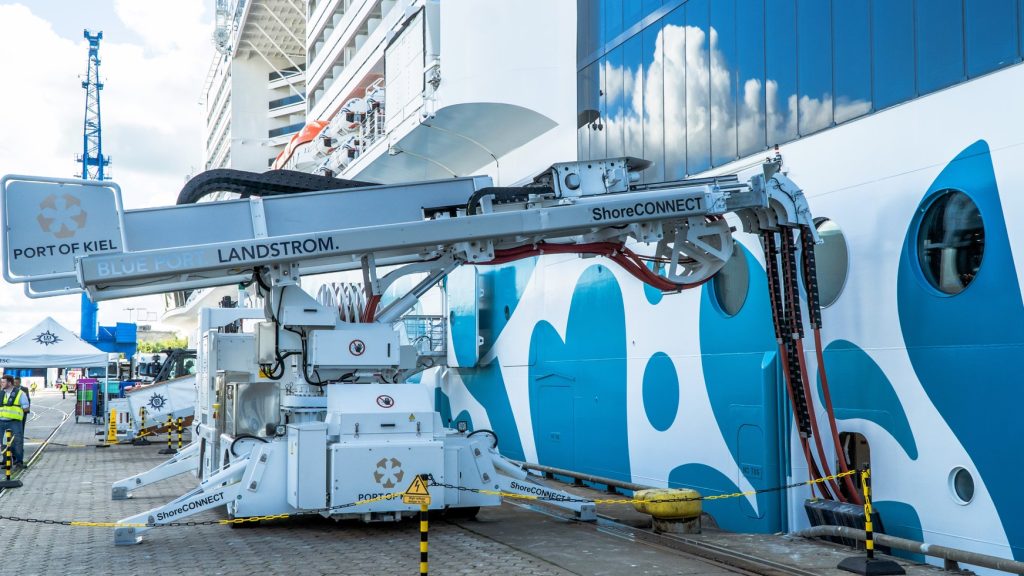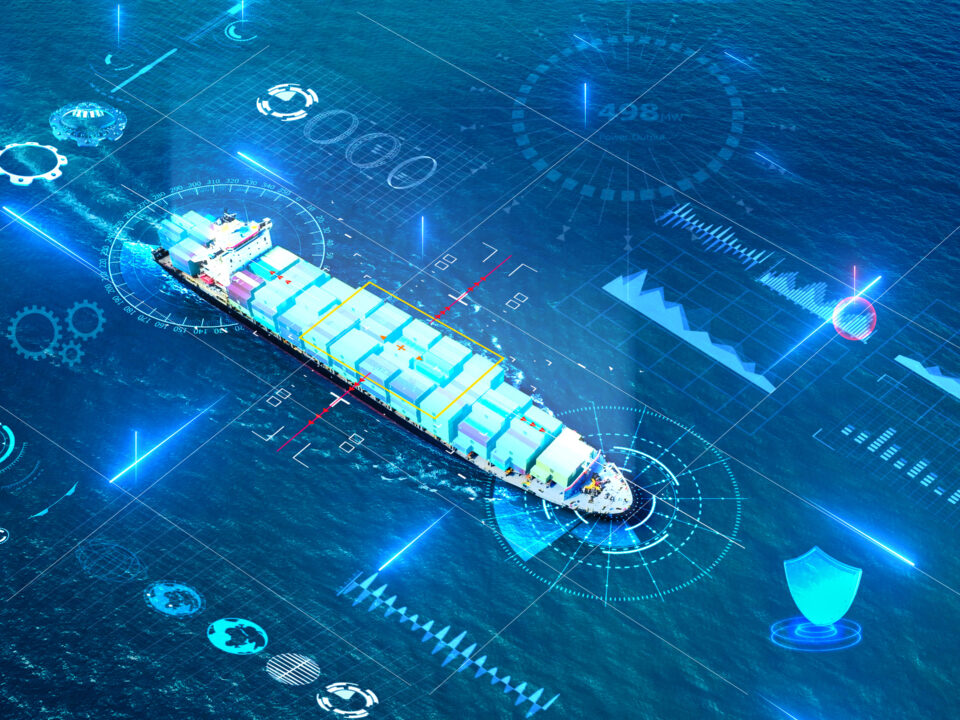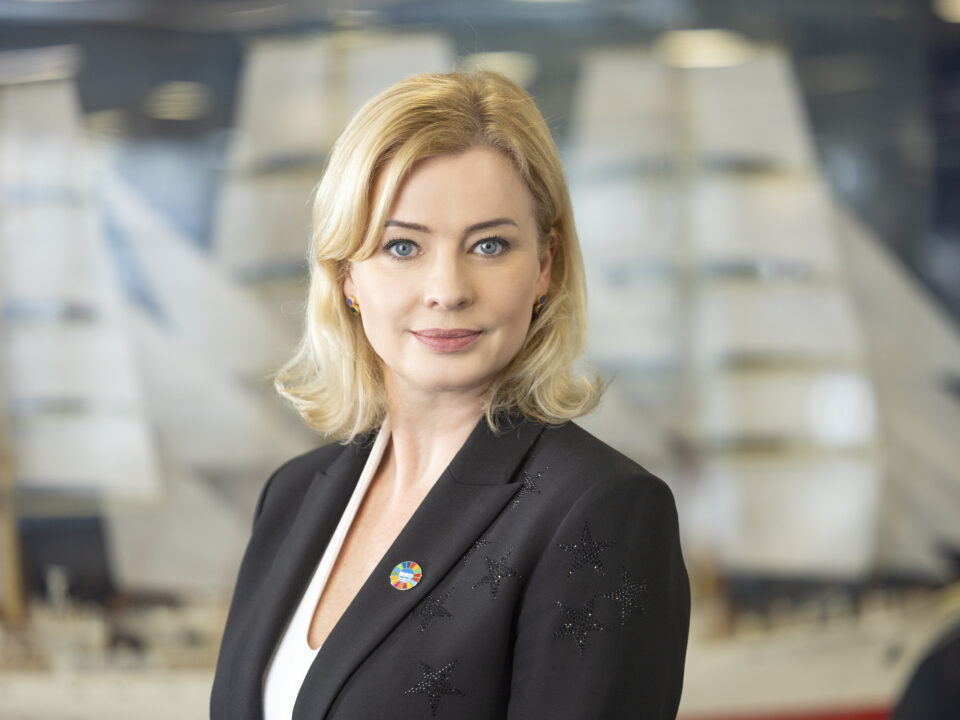
Virtual battle with tangible consequences
13 September 2024
Coal shapes results
13 September 2024As early as six years from now, EU regulations will force ports to have onshore power supply (OPS) systems for ships. Such systems are already in operation in Świnoujście and Gdynia, and the Port of Gdańsk is considering its construction at the Obrońców Westerplatte wharf and the Baltic Hub.
The OPS system (the first of its kind in the country) at the Public Ferry Terminal in the Port of Gdynia was created as early as in 2022. The solution consists of a massive (it weighs almost 30 t) and built-up container, cable outlets (located in 3 places on the wharf) and a cable line laid along the Polish wharf in a cable duct and a mobile davit. It is by means of the aforementioned davit that a cable with a “socket” is fed to the ship. The system is designed to power ships with an on-board 11kV 50Hz/60Hz installation from the onshore 15kV 50Hz energy grid. The power output of the connection to the ship is 3.5 MW, which means fast charging of ship batteries, even for a large ferry.
The Port of Gdynia is also planning to build shore power systems at other wharfs that handle cargo vessels. The systems will be servicing passenger, roll-on/roll-off and container ships, because these are the vessels covered by existing international and EU regulations that require ports to have OPSs. Currently, ZMPG is awaiting the outcome of a competition for CEF2 funding for studies related to onshore power.
In the Oder ports, onshore power has been offered since 2023 by the ferry terminal in Świnoujście, where it was created as part of the expansion and modernization of the facility. The system offers ship power at 5 ferry stations at 50Hz and 60Hz with a rated power of up to 3 MW. The aforementioned dual system is also important because it can allow vessels other than passenger ferries to be serviced. After all, some marine vessels have 50 Hz installations, while others have 60 Hz installations; the Polish power grid operates at 50 Hz, hence the need for solutions that are as universal as possible. According to the Szczecin and Świnoujście Seaport Authority, further OPS installations in the port of Szczecin are undergoing preliminary design.
At the Port of Gdańsk, the details of the investment in onshore power supply are informed by the already developed document “Analysis of the implementation of an onshore power system for ships in the Port of Gdańsk (OPS).” Based on it and in response to EU regulations, it was determined that the OPS system should first be installed at the Obrońców Westerplatte wharf and the Baltic Hub terminal.
According to information from the Port of Gdańsk Authority, the results of the study made it possible to determine the quantitative and qualitative parameters of electrical points, define variants for implementing the system and determine its estimated costs. The analysis envisions three main scenarios for the development of the OPS. Depending on the variant, the supply of the following was assumed: 2 vessels at the Obrońców Westerplatte wharf, and from 1 to 5 vessels at the Baltic Hub.
The Port of Gdańsk at this stage has not yet set a specific date for the investment, but the decision is expected to come after identifying the actual demand for such solutions. However, preparations for future construction of the system have been and will continue to be of a technical nature – space for cable ducting has been secured in the recently implemented renovations of selected wharves, and space for it will also appear in further modernized and newly constructed wharves.
Significantly, all of Poland’s major ports emphasize that interest from shipowners other than ferries in shore power is simply negligible.
The direct benefit of using OPS systems in ports is, of course, to protect the environment – a vessel in port does not use internal combustion engines, so there are no CO2 emissions. Additional and lesser-known advantages are the absence of noise and the benefit to the shipowner of extending the life of auxiliary engines. Ultimately, the ports should use only green energy, which will later go to the ship. At this stage, energy from fossil fuels is used to provide energy to the vessel, which makes a rather absurd situation, since no CO2 emissions occur at the port, but it is “transferred” to a place of power generation.
As for the popularity of OPS installations, the largest number are in operation in Sweden, Norway, Denmark, Finland and Germany. They are available at several ports in each country, but are usually limited to one or at most a few wharves. As for the Baltic Sea region, wharf supply systems are available at about 20 ports. So you can find them in at least one port of every country (Lithuania is an exception). As in Poland, most such systems are offered mainly to ferries/ro-pax vessels. Although quite a few ports report plans to invest in onshore power, actual work on their construction can probably only begin in a few years.





